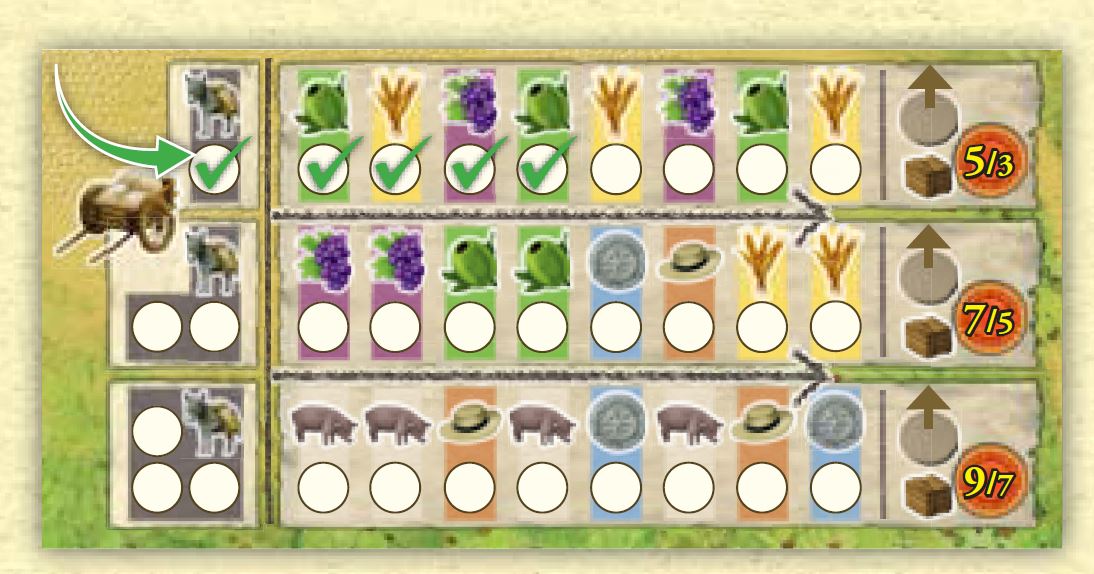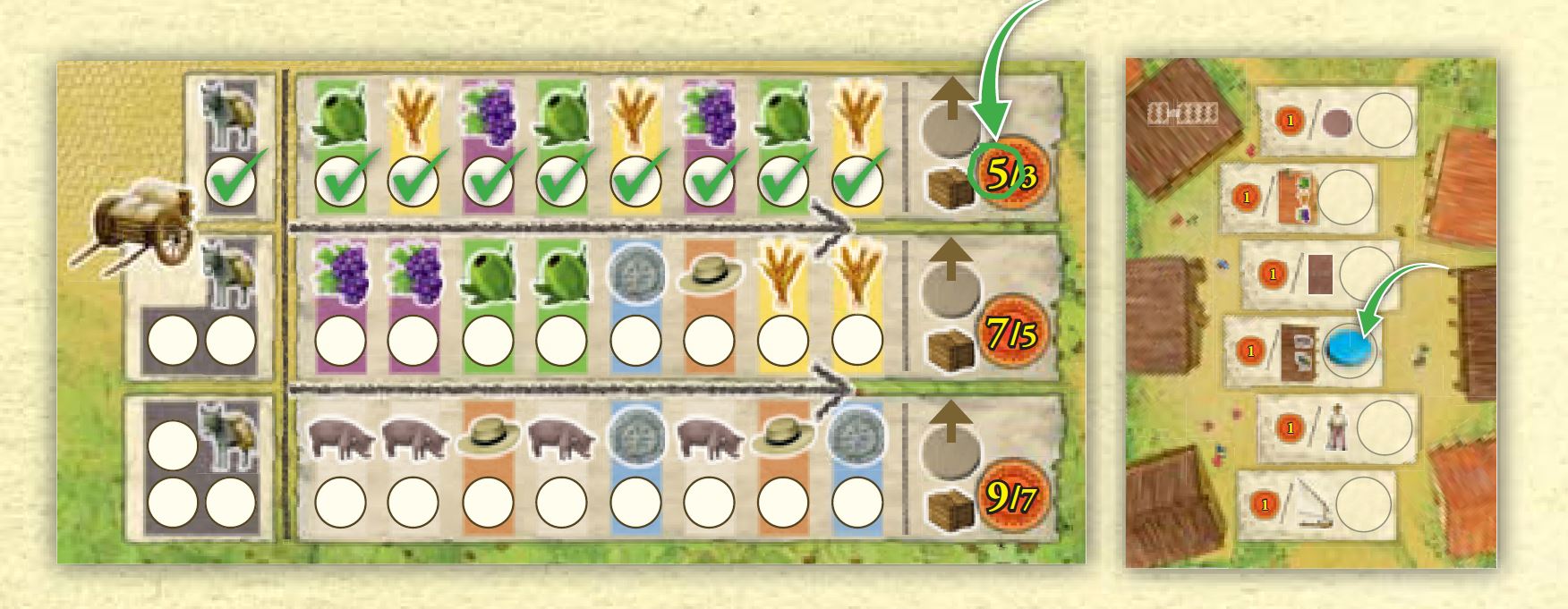The carts are located in the bottom right.
The carts display a combination of revenues the player must deliver for each cart.
A player may serve all three carts, but must complete the revenues for each cart in order from left to right.
(The arrows between the carts are a reminder for the correct order of revenues.)
The player must also supply the required number of donkeys for a given cart to score the cart, and may supply them "in between" delivering the revenues.
The player may deliver revenues and supply donkeys for a cart over several turns, and does not have to do this in a single scoring phase.
When a player fills a cart completely and hitches donkeys to it, he receives a commodity, which he marks on his revenue board.
He may now place a disc from his pool on the Esporles Market board.
This board shows six different bonus scores for the final tally.
The player places his disc in the box of his choice; he now has one less disc available for the remainder of the game and may no longer use this disk to mark revenue.
Each space on the market may hold a number of discs equaling the number of players minus one.
A player may place only one disc per box.
Example: In a 3-person game, only 2 players may choose the same space on the market.
The first player to complete a cart (including any donkeys) circles the larger victory point value to the right of the cart.
The other players cross off this number and receive the lower victory point value if they score the cart in a later scoring phase.
These victory points will be awarded during end game scoring.
In the rare case several players score the same cart during the same scoring phase,
the player who has advanced furthest on the Siesta Track receives the higher victory point value.
If players are also tied on the Siesta Track, those players will both receive the higher victory point value.
The carts are located in the bottom right.
The carts display a combination of revenues the player must deliver for each cart.
A player may serve all three carts, but must complete the revenues for each cart in order from left to right.
(The arrows between the carts are a reminder for the correct order of revenues.)
The player must also supply the required number of donkeys for a given cart to score the cart, and may supply them "in between" delivering the revenues.
The player may deliver revenues and supply donkeys for a cart over several turns, and does not have to do this in a single scoring phase.
 Example
Example: Marion has marked the first four revenues in the cart in prior turns.
This turn she marks one donkey in front of the cart.
Later she loads the other revenues onto the cart and scores the cart.
When a player fills a cart completely and hitches donkeys to it, he receives a commodity, which he marks on his revenue board.
He may now place a disc from his pool on the Esporles Market board.
This board shows six different bonus scores for the final tally.
The player places his disc in the box of his choice; he now has one less disc available for the remainder of the game and may no longer use this disk to mark revenue.
Each space on the market may hold a number of discs equaling the number of players minus one.
A player may place only one disc per box.
Example: In a 3-person game, only 2 players may choose the same space on the market.
The first player to complete a cart (including any donkeys) circles the larger victory point value to the right of the cart.
The other players cross off this number and receive the lower victory point value if they score the cart in a later scoring phase.
These victory points will be awarded during end game scoring.
In the rare case several players score the same cart during the same scoring phase,
the player who has advanced furthest on the Siesta Track receives the higher victory point value.
If players are also tied on the Siesta Track, those players will both receive the higher victory point value.
 Example
Example: Marion is the first to complete the upper market cart.
She scores the cart and marks the 5 victory points.
She then places one of her discs on a scoring space on the Esporles Market board.
All other players must cross off the 5 victory points – if they complete it later, they will only receive the lower value.